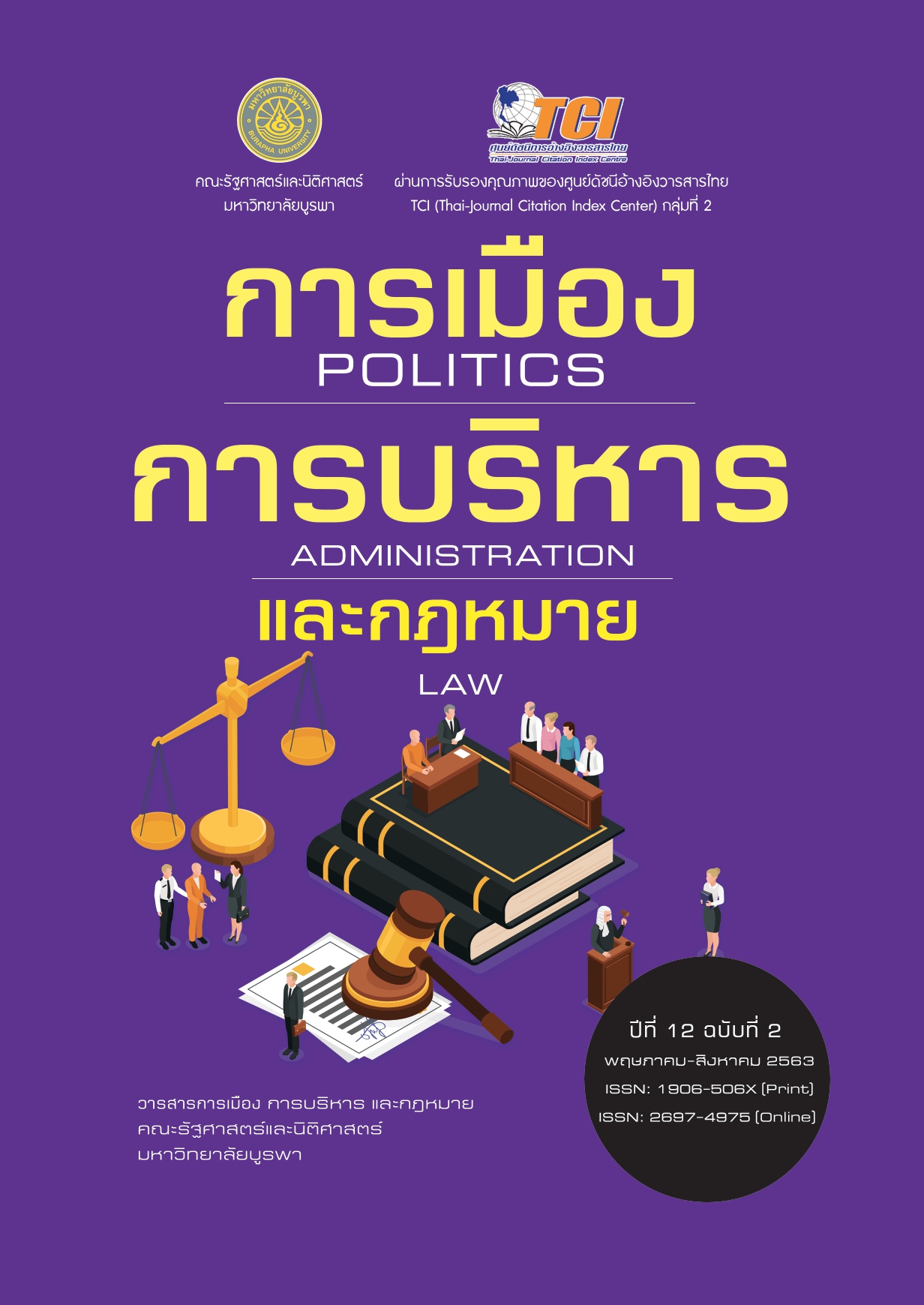ความพึงพอใจและความผูกพันต่อองค์กร ของพนักงาน บริษัท ธนารักษ์พัฒนาสินทรัพย์ จำกัด ประจำปี 2561
คำสำคัญ:
ความพึงพอใจต่อองค์กร, ความผูกพันต่อองค์กรบทคัดย่อ
การศึกษาครั้งนี้มีวัตถุประสงค์เพื่อ 1) ศึกษาระดับความผูกพันต่อองค์กรของพนักงานบริษัท ธนารักษ์พัฒนาสินทรัพย์ จำกัด 2) ศึกษาปัจจัยที่ส่งผลต่อความผูกพันต่อองค์กรของพนักงานบริษัท ธนารักษ์พัฒนาสินทรัพย์ จำกัด และ 3) เปรียบเทียบระดับความผูกพันต่อองค์กรของพนักงานบริษัท ธนารักษ์พัฒนาสินทรัพย์ จำกัด ระยะเวลา 3 ปี ลักษณะของวิธีการวิจัยแบบผสมผสานวิธี ระหว่างการวิจัยเชิงปริมาณ โดยใช้แบบสอบถาม และการวิจัยเชิงคุณภาพ โดยใช้การสนทนากลุ่ม ผลการวิจัยพบว่า 1. ระดับความพึงพอใจในภาพรวมนั้นอยู่ในระดับมาก ค่าเฉลี่ยเท่ากับ 4.27 และระดับ ความพึงพอใจต่อองค์กรของพนักงานบริษัท ธนารักษ์พัฒนาสินทรัพย์ จำกัด พบว่า พนักงานมี ความพึงพอใจต่อองค์กรอยู่ในระดับมาก ค่าเฉลี่ยเท่ากับ 4.41 2. ปัจจัยที่ส่งผลต่อความผูกพันต่อองค์กรของพนักงานบริษัท ธนารักษ์พัฒนาสินทรัพย์ จำกัด ได้แก่ ปัจจัยลักษณะงาน ปัจจัยจูงใจ ปัจจัยค้ำจุน และปัจจัยพฤติกรรมเชิงสร้างสรรค์ 3. การเปรียบเทียบปัจจัยด้านความผูกพันในองค์กร และความพึงพอใจจากผลสำรวจปี 2559 ปี 2560 และปี 2561 พบว่า ค่าเฉลี่ยของแต่ละปัจจัยมีค่าเฉลี่ยสูงขึ้น ซึ่งแสดงถึงความผูกพันและ ความพึงพอใจในองค์กรมีอยู่ในระดับมาก
เอกสารอ้างอิง
กฤษดา ตั้งชัยศักดิ์. (2559). วิธีการวิจัยทางธุรกิจ. กรุงเทพฯ: แดเน็กซ์ อินเตอร์คอร์ปอเรชั่น.
จิตติภา ขาวอ่อน. (2547). ความพึงพอใจในการปฏิบัติงานของข้าราชการปลัดกระทรวงศึกษาธิการ. วิทยานิพนธ์ครุศาสตรมหาบัณฑิต, สาขาการบริหารการศึกษา, บัณฑิตวิทยาลัย, มหาวิทยาลัยราช ภัฎเทพสตรี.
ชลิตา แค่มจันทึก. (2559). การศึกษาความสัมพันธ์ระหว่างแรงจูงใจในการทำงานความผูกพันต่อองค์การที่มีผลต่อระดับความคิดเห็นพฤติกรรมการทำงาน: กรณีศึกษามหาวิทยาลัยเทคโนโลยีราชมงคล ธัญบุรี. การค้นคว้าอิสระปริญญามหาบัณฑิต, มหาวิทยาลัยกรุงเทพ.
โชติมา หนูพริก. (2553). การพัฒนาระบบประเมินการเรียนการสอนคณิตศาสตร์ สำหรับนักเรียนชั้นมัธยมศึกษาปีที่ 1. วิทยานิพนธ์ปริญญาปรัชญาดุษฎีบัณฑิต, สาขาหลักสูตรและการสอน, มหาวิทยาลัยศิลปากร.
ณัฏฐพันธ์ เขจรนันทน์. (2551). พฤติกรรมองค์กร. กรุงเทพฯ: ซีเอ็ดยูเคชั่น.
ปรียาพร วงศ์อนุตรโรจน์. (2535). จิตวิทยาการบริหารงานบุคคล. กรุงเทพฯ: ศูนย์ส่งเสริมกรุงเทพ.
พรทิพย์ ไชยฤกษ์. (2555). ความผูกพันต่อองค์กรและพฤติกรรมเชิงสร้างสรรค์ของบุคลากรสถาบันวิจัยแสงซินโครตรอน (องค์การมหาชน). วิทยานิพนธ์ปริญญาการจัดการมหาบัณฑิต, สาขาวิชาเทคโนโลยีการจัดการ, มหาวิทยาลัยเทคโนโลยีสุรนารี.
พิชิต เทพวรรณ์. (2554). การจัดการทรัพยากรมนุษย์เชิงกลยุทธ์. กรุงเทพฯ: ซีเอ็ดยูเคชั่น.
สมยศ นาวีการ. (2540). การบริหารและพฤติกรรมองค์การ เรื่องการจูงใจ: จากแนวคิดไปสู่การประยุกต์ใช้. กรุงเทพฯ: สำนักพิมพ์บรรณกิจ.
สุดารัตน์ ธีรธรรมธาดา. (2558). ปัจจัยแรงจูงใจใฝ่สัมฤทธิ์พฤติกรรมเชิงสร้างสรรค์และความฉลาดทางอารมณ์ที่ส่งผลต่อประสิทธิภาพในการทำงานของพนักงานบริษัทเอกชนในเขตกรุงเทพมหานคร.การค้นคว้าอิสระบริหารธุรกิจมหาบัณฑิต, บัณฑิตวิทยาลัย, มหาวิทยาลัยกรุงเทพ.
สุพชร ไตรวิจิตรศิลป์. (2559). ปัจจัยที่มีอิทธิพลต่อความผูกพันของพนักงานต่อองค์กรกรณีศึกษา พนักงานเจนเนอเรชั่นวายในองค์กรเอกชน เขตสาทร และอโศก. วารสารวิชาการ มหาวิทยาลัยอีสเทิร์นเอเชีย, 2(6), 260 - 266.
สุรเชษฐ์ ผการัตน์สกุล. (2552). ความพึงพอใจในการปฏิบัติงานของพนักงานธนาคารกรุงเทพ จำกัด (มหาชน) ภาคนครหลวง 2. วิทยานิพนธ์ปริญญาบริหารธุรกิจมหาบัณฑิต, สาขาการจัดการทั่วไป, มหาวิทยาลัยราชภัฏธนบุรี.
Allen, N. J., & Meyer, J. P. (1990). The Measurement and Antecedents of Affective, Continuance and Normative to the Organizations Commitment to the Organizations. Journal of Occupational Psychology, 63(1), 1 - 18.
Hackman, M. A., & Oldham, G. R. (1980). Work redesign. Masachuserrs: Addison-Wesley Publishing Company.
Herzberg, F., Mausner, B., & Snyderman, B. (1959). The Motivation to work. New York: John Wiley & Son.
Hewitt Associates. (2004). Impact of Engaged Employees on Business Outcomes; Ongoing Employee Engagement Research. Retrieved September 20, 2018, from http://www.aon.com/default.jsp.
Kleysen, R. F., & Street, C. T. (2001). Towards a Multi-dimensional measure of individual innovative behavior. Journal of Intellectual Capital, 2(3), 174 - 296.
Steers, R. M., & Porter, L.W. (1983). Motivation and Work Behavior (3rd ed.). New York: McGraw – Hill.
Strauss, G., & Sayles, L. R. (1980). Personnel: The Human Problems of Management. New Jersey: Prentice-Hall.






